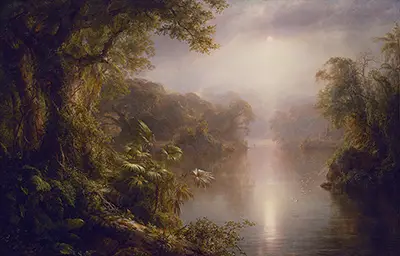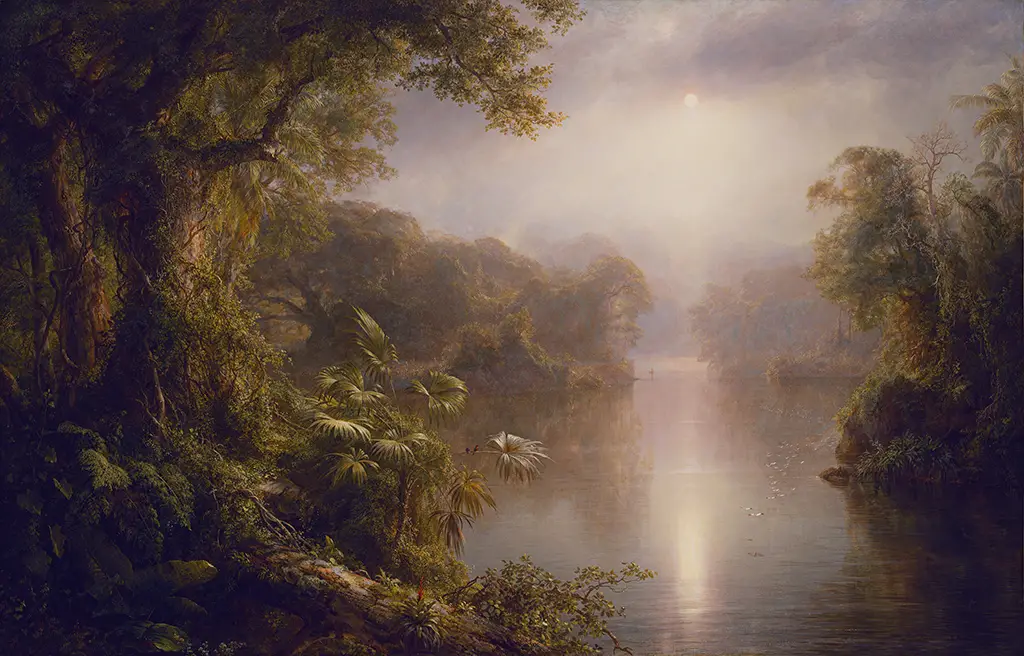 Buy Art Prints Now
Buy Art Prints Nowfrom Amazon
* As an Amazon Associate, and partner with Google Adsense and Ezoic, I earn from qualifying purchases.
Painted in 1877 in oil on canvas, El Rio de Luz translates from Spanish as River of Light and depicts a mystical and almost ethereal mood of an Ecuadorian rainforest at dawn.
Also known as Morning in the Tropics, the piece is Church's last large-scale landscape of South America, measuring 138.1 x 213.7cm. The fantastical composition is a blend of sketches made on his travels to the tropics in 1957. The piece was once titled The Amazon, but it is unknown whether the artist intended this assumption. It is considered more likely that the portrayal was a fusion of archetypal tropical scenes.
Along with exploring wilderness locations across the world, Church studied botany, meteorology and ecology to enhance his work, and this knowledge is demonstrated in the detail and realism of the painting. Influenced by his master, Thomas Cole, who created such works as the four part, almost spiritual, series, The Voyage of Life, Church's compositions often presented the viewer with the infinite wonders of the natural world.
In this highly detailed composition there is still harmony of tone and controlled coloration. Together with the soft mist depicted on the water, the vista evokes a sense of wonderment and intrigue at what may lie beyond. In common with an earlier piece, The Andes of Ecuador 1855, the sunlight is thought to be suggesting the formation of a subtle cross. The artist was analysed by scholar David Huntington during the 1960s, where he interpreted this as Christian symbolism for 19th Century Americans. Critics describe the painting a Church's 'last and perhaps greatest psychic landscape'.
Whilst characters can be seen in El Rio de Luz, such as birds and a canoeist, their presence does not disturb the tranquillity emitted. The low vantage point also invites the viewer into the painting and the detailed realism suggests the viewer could indeed step into the meditative scene. This is considered a poignant difference to earlier compositions in which the viewer was higher and more distant from the scene.
William Earl Dodge Jr first purchased the painting and it remained in the Dodge family until 1965 when it was donated to the Preservation Society of Newport County, and then in the same year purchased by the National Gallery of Art in Washington DC, who retain ownership today. El Rio de Luz was restored in 1988 where discoloured varnish was removed. Technical analysis of the painting during restoration concluded it to be thinly painted across most parts with dark highlights more thickly laid, and some areas of impasto. The restoration process removed passages of trees in the middle distance which were subsequently in-painted.





